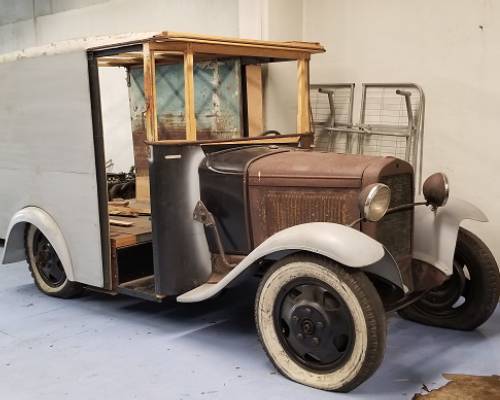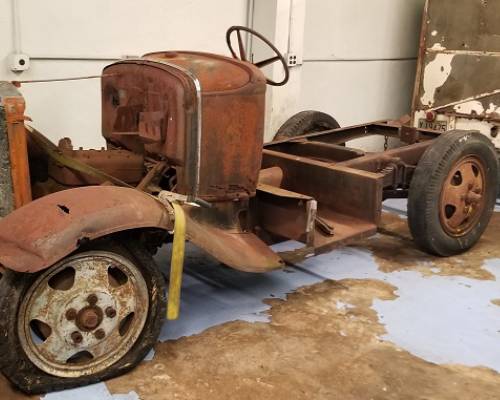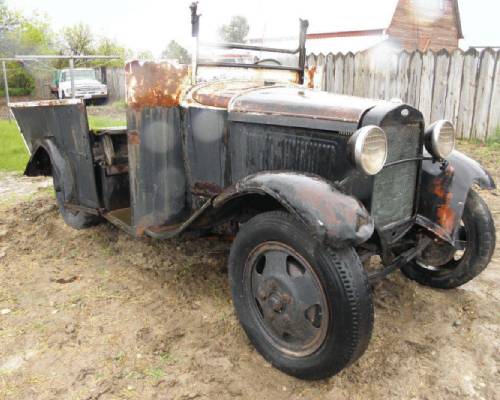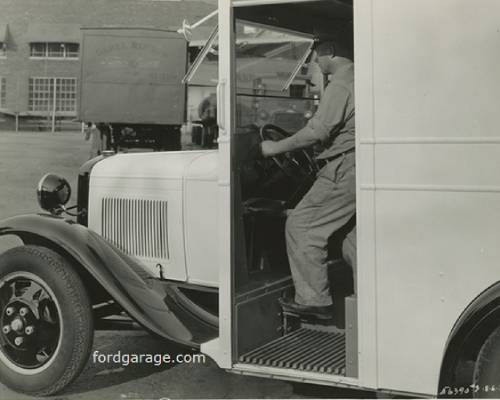Since my goal is to find rare “Stand & Drive” delivery vehicles, restore them to original status and save them for future generations to enjoy, a friend of mine contacted me in August 2018. He found these two 1931 Ford Model AA delivery trucks for sale on eBay. They were in Detroit, Michigan. I was able to buy these trucks, picked them up in September 2018 and brought them back to my shop.
As you can see they are in need of a lot of work. My plan for the rusty bare unit is to leave it in the true “as is” condition. The other unit with a body on it is to completely restore it. Time will tell when I will start this project.
This was a true surprise to find these trucks. I never saw one of them in person. I read about them and saw a picture of one some time back. Since I bought these units I have found some more info on the internet about the trucks and located a restored one at the Elliot Museum in Stuart, Fl. Another one is trying to be sold on eBay. These are two other Ford Model AA Standrive trucks known to be in existence. I have attached pictures of those trucks.
(Some Info and pictures from Ford Garage Web Page www.fordgarage.com)
Ford produced a stand & Drive truck Model 315-A in 1931 and 1932 that was used to delivery milk to the city houses. These stand and drive trucks made it easy to delivery products to houses. A driver could eliminate all the getting up and sitting down action a driver has to do each time he came to a stop if he sat down to drive. Ford produced 459 of these models. There are a few surviving units. One is in the Elliott Museum in Stuart Florida, one possibly in the Henry Ford Museum, one advertise for sale and the two that I have
The first Ford Standrive was produced in august 1931. They used a shortened Model AA chassis of 112” wheel base. The frame was cut and a drop section was installed in the driver area so he could stand while driving.
The Standrive (this was Ford’s way of getting around the patented “Stand to Drive” model) had a number of unique features in addition to its short wheelbase and drop frame. The steering wheel was a deep dish spoke design to place the rim farther away from the windshield area so the driver’s hands would not hit the windshield and the throttle lever was mounted on the steering column in an extended length design.
There was a unique large windshield that was split into an upper and lower glass.
The clutch and brake pedals were extended thru the front wall of the dropped floor area and connected by levers and linkage to the sit down clutch and brake pedals. There was a seat for the driver to sit on or lean against that would swing out of the way if not needed.





